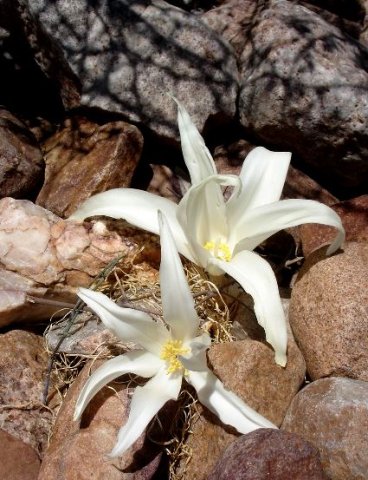Gethyllis namaquensis

Author: Ivan Lätti
Photographer: Judd Kirkel Welwitch
Gethyllis namaquensis, the Namaqualand kukumakranka, is a deciduous, bulbous perennial of the Amaryllidaceae family. Dense clumps of up to eight plants may be formed over several growing seasons. The fruit called kukumakranka, still bears its Khoi or San name.
The species is recognised by two often red maroon sheaths below the leaves. The numerous nearly erect, succulent leaves are dry or gone by bloomtime. Leaf dimensions are up to 20 cm long and 1 cm wide at the base.
Next to the developing leaves the fruit grows from the ground following winter rains. The pollination that made it possible happened during last summer's flowering.
The species distribution is in the far northwest of the Northern Cape, widespread in parts of the Richtersveld, from east of Port Nolloth to Helskloof. The photo was taken near the Gariep River.
The habitat is coastal dunes, gravelly slopes in succulent Karoo and semidesert shrubland. In spite of some human uses the habitat population is deemed of least concern early in the twenty first century.
The fruits are harvested for food and medicine, while plants are collected for horticultural purposes. Overgrazing continues in the area. Kukumakrankas were used in the past to flavour brandy. Making this liqueur from plants harvested from the veld is considered threatening to the future of the Gethyllis genus (Duncan, et al, 2016; Williamson, 2010; iNaturalist; http://redlist.sanbi.org).

